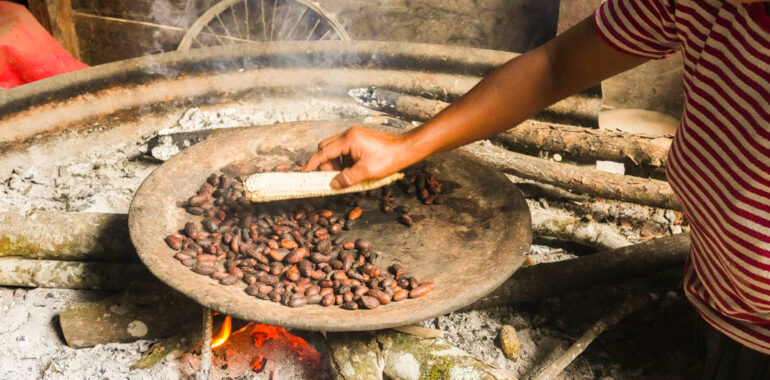FLAAR Mesoamérica tells you about this experience from the great mountains of Senahú
Chocolate is currently one of the most in-demand edible products globally, having a market of USD 115.80 billion in 2022 and is expected to register a CAGR of 3.4% during the forecast period. But do you know where this delicious product is extracted from?
In this article we show you the process of the hand-made chocolate drink from the great mountains of Senahú, Alta Verapaz, by the Q’eqchi’ communities, and it all goes back to the famous Theobroma cacao plant or better known as cocoa.
There is no doubt that, for the Mayans, in pre-Columbian times, cacao was a very important plant, since with it they could make delicious drinks combined with other species of plants, it was also a source of food and above all it was considered a currency. sacred in its trade.
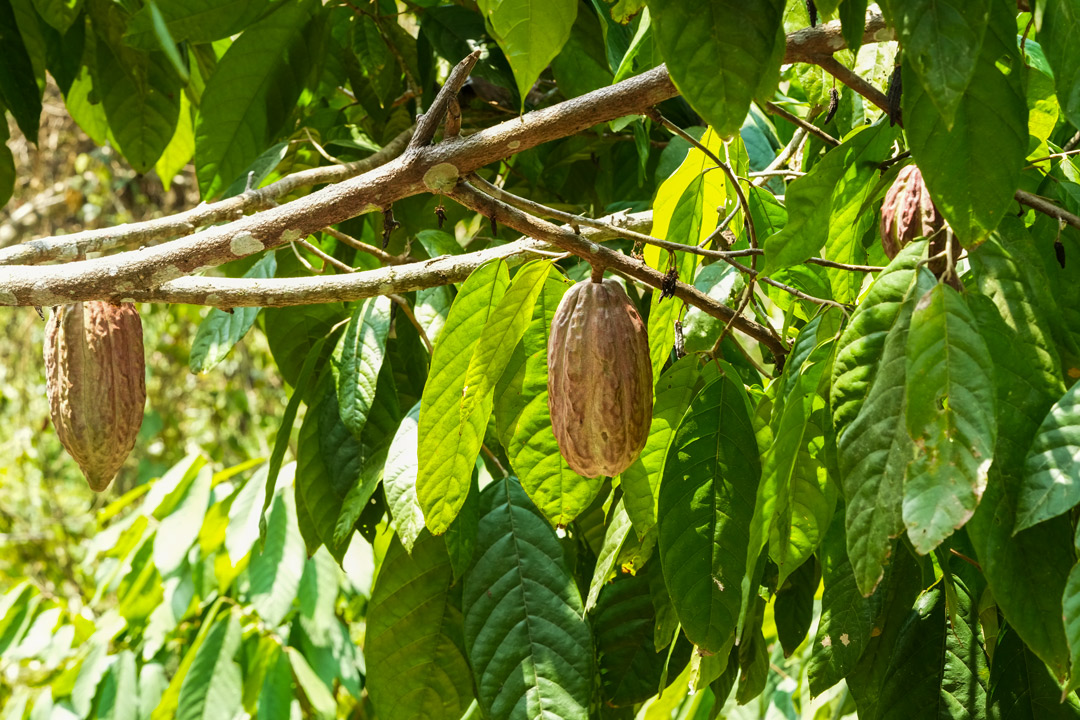
Theobroma cacao – Cacao fruit – Photo by María Alejandra Gutiérrez – Senahú, Alta Verapaz, Guatemala, Chipemech community – Apr. 17th 2024
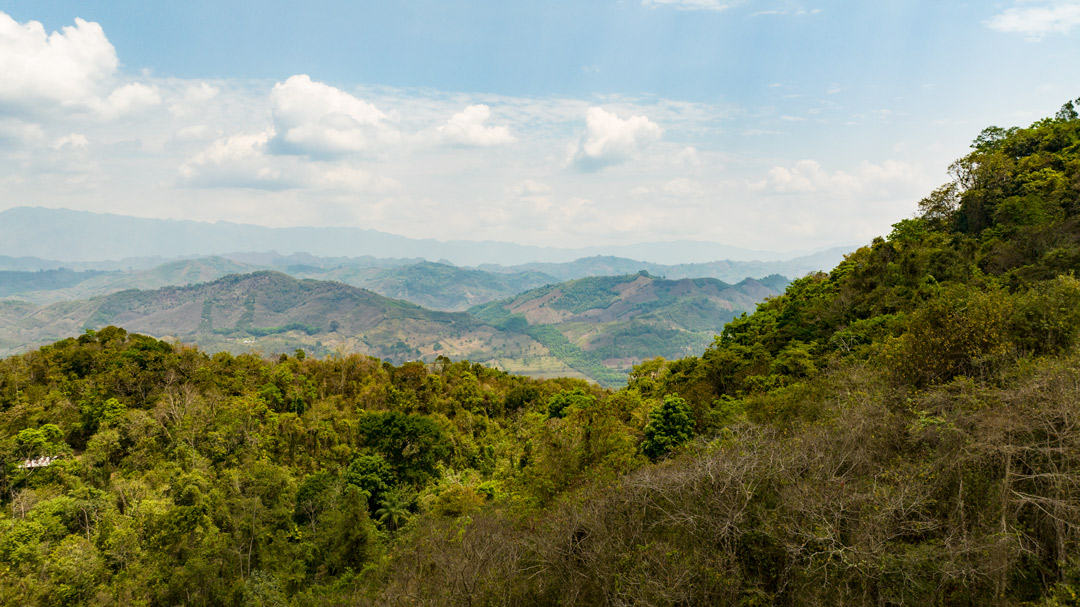
Senahú mountain landscape Drone photo by Brandon Hidalgo – Senahú, Alta Verapaz, Guatemala, Chipemech community – Apr. 17th 2024
On May 14th, 2024, our expedition team visited the Q’eqchi’ community located in the municipality of Senahú in Alta Verapaz department. Where the main objective was to document the handmade process of cacao drink after several days of expedition, the Chipemec village was visited, located 12 km away from the center of Senahú. In this place we visited the mother of our collaborator Senaida Ba, who very kindly gave us authorization to document this valuable process that needs to be followed step by step to the letter.
1- The cacao beans are harvested when the fruit has a reddish yellow color, this means that the seeds are ready to be extracted and placed on a tray in the sun for a few days so that they can dry.
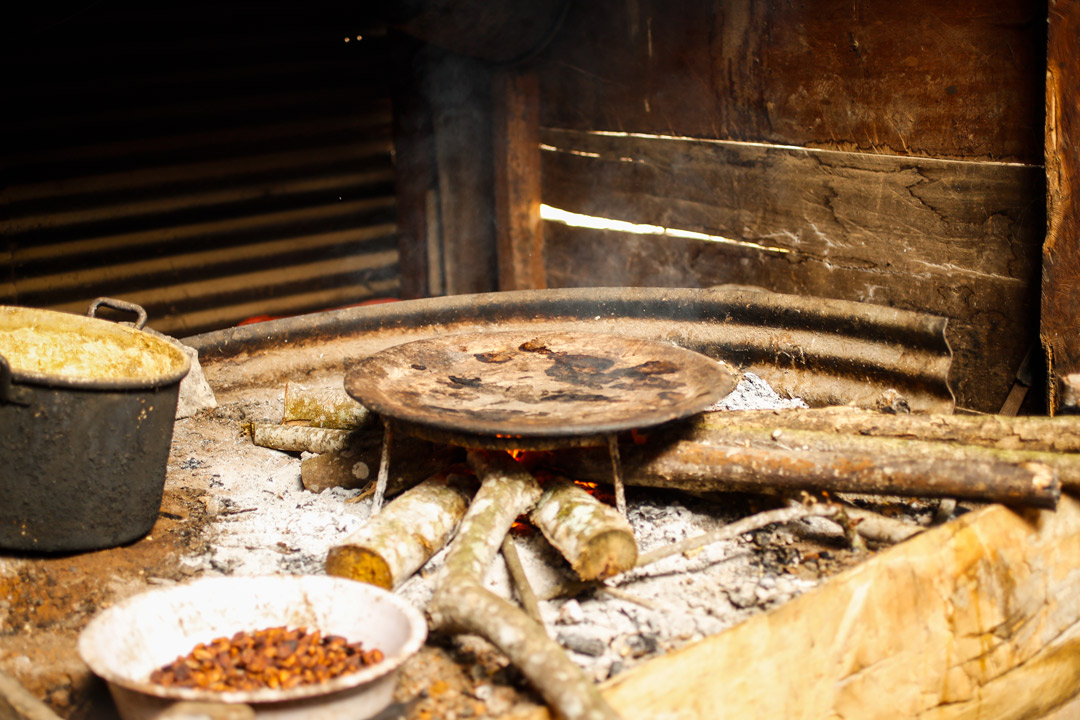
Artisanal cuisine – Photo by María Alejandra Gutiérrez – Senahú, Alta Verapaz, Guatemala, Chipemech community – Apr. 18th 2024
2- After a few days, the seeds are ready and are collected to be processed. With the help of firewood and a comal (a type of local clay griddle used in mayan culture), the cocoa seeds are roasted until they are a very dark color.
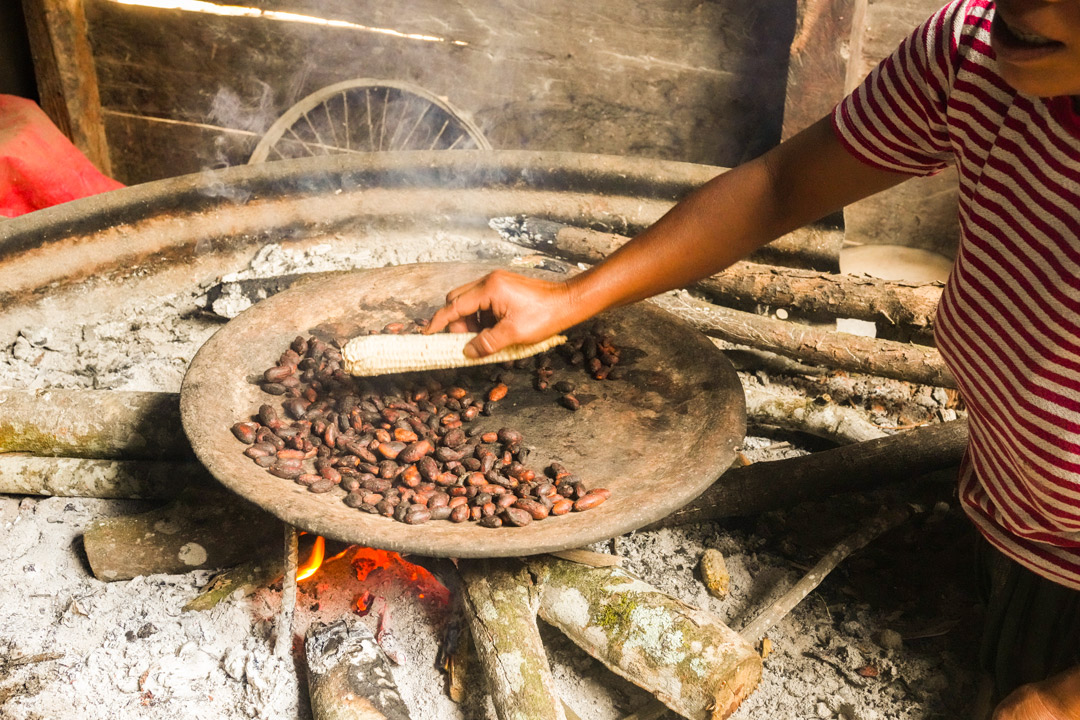
Photo by Brandon Hidalgo – Senahú, Alta Verapaz, Guatemala, Chipemech community – Apr. 18th 2024
3- The toasted seeds are collected and to grind them, with the help of a traditional ground stone locally known as metate.
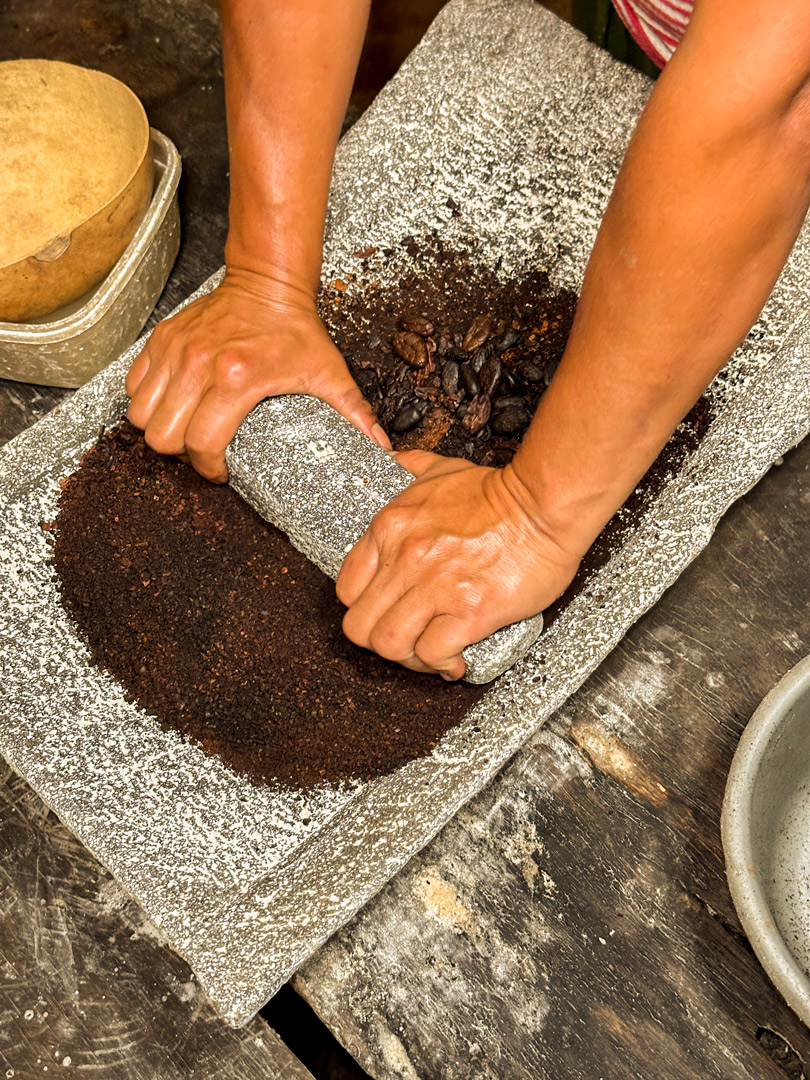
Photo by Victor Mendoza – Senahú, Alta Verapaz, Guatemala, Chipemech community – Apr. 18th 2024
4- Collect the cacao powder in a morro container (Crescetia cujete fruit, used as bowls) and add a cup of hot water, then beat it with your hands until it becomes a kind of brown paste and let it rest so that the cacao begins to release its natural oils.
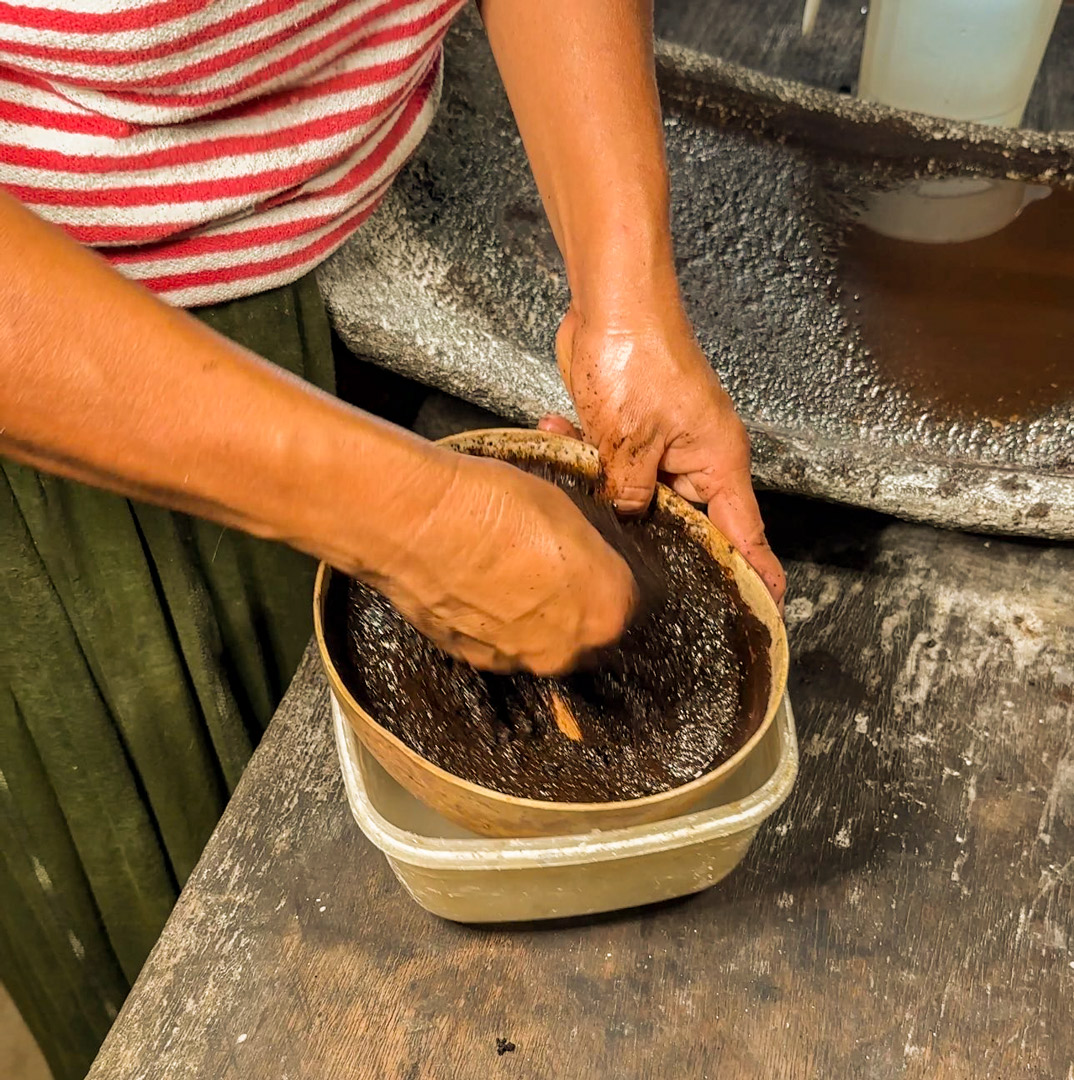
Photo by Victor Mendoza – Senahú, Alta Verapaz, Guatemala, Chipemech community – Apr. 18th 2024
5- After a few minutes the cacao paste is ready to make a drink, taking a handful of the paste in a liter of water and adding sugar to taste.
This process can last approximately an hour, but the most amazing thing about it is that , when the cacao is not available the native people use a substitute for cacao locally known as “Pataxte”, which is a plant of the same genus called Theobroma bicolor and they do it following the same five previous steps. In very extreme scenarios of shortages of both pataxte and cacao , you can also use the Zapote (Pouteria sapota) seeds as a substitute to make this delicious beverage , leaving the naked seeds and cooking them for three days before carrying out the traditional process.

Theobroma cacao – Cacao seeds – Photo by María Alejandra Gutiérrez – Senahú, Alta Verapaz, Guatemala, Chipemech community – Apr. 18th 2024

Local people Q’eqchi’ and FLAAR expedition team – Photo by María Alejandra Gutiérrez – Senahú, Alta Verapaz, Guatemala, Chipemech community – Apr. 19th 2024
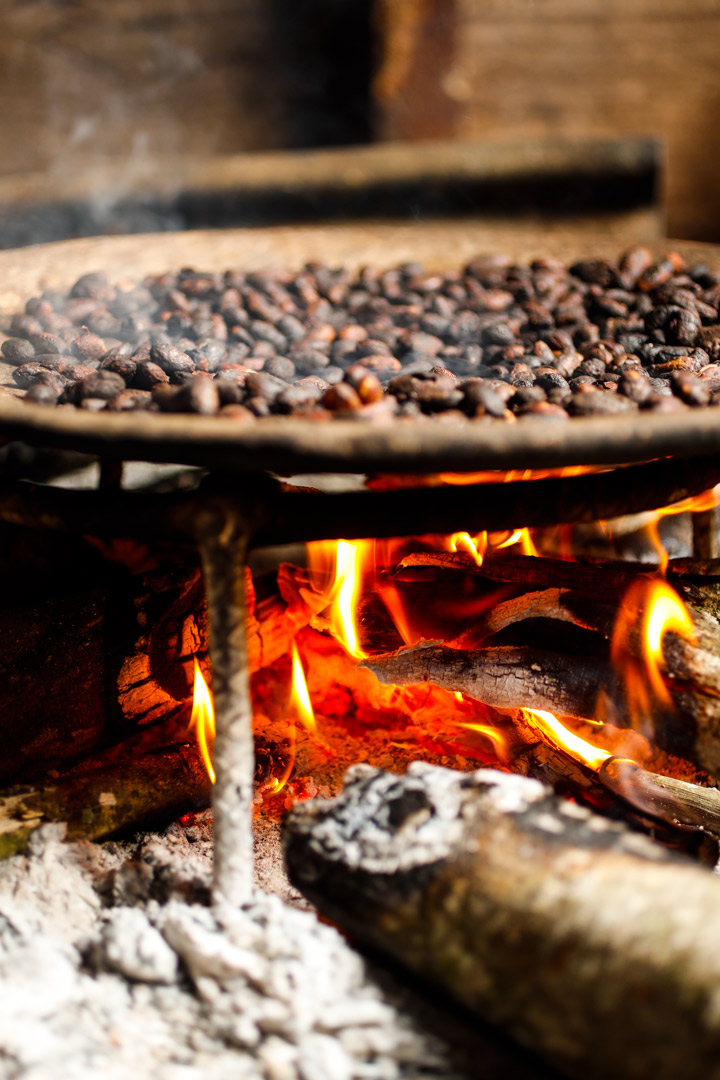
Theobroma cacao – Cacao seeds – Photo by Victor Mendoza – Senahú, Alta Verapaz, Guatemala, Chipemech community – Apr. 18th 2024
Written by: Eng. Victor Mendoza.
Expedition team: Photographer Alejandra Gutiérrez, Drone Pilot Brandon Hidalgo. Production and Research Assistants Senaida Ba & Julia. Researcher Victor Mendoza.
Editor: Eng. Vivian Hurtado

